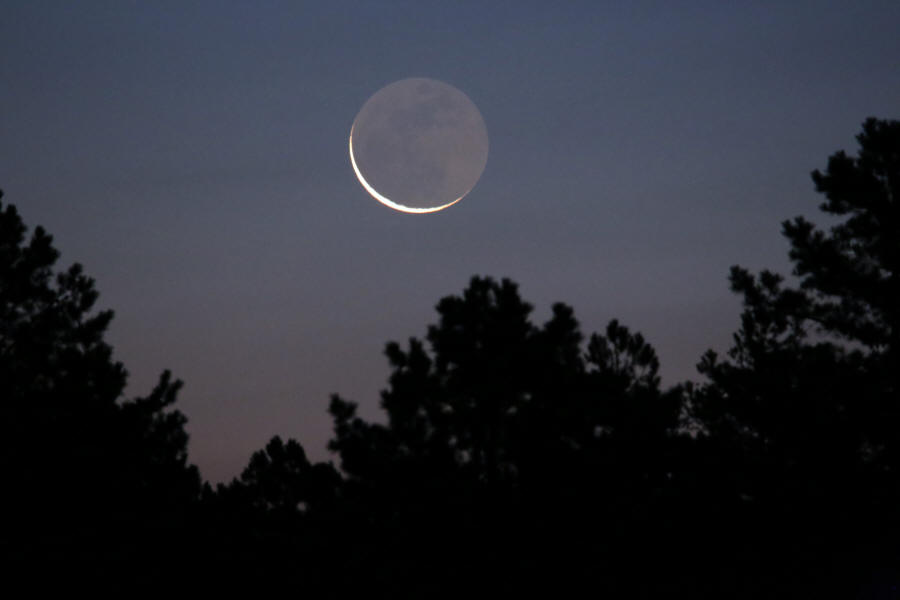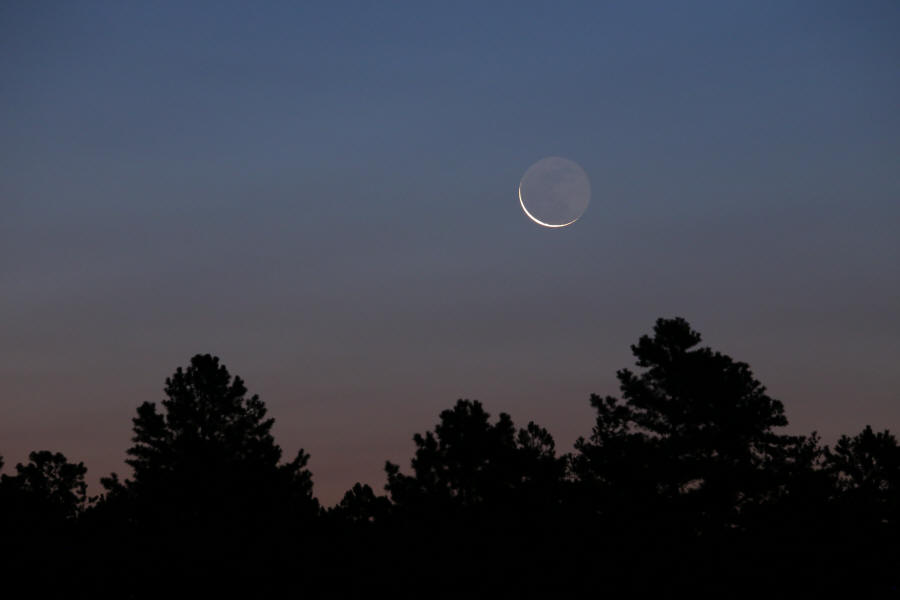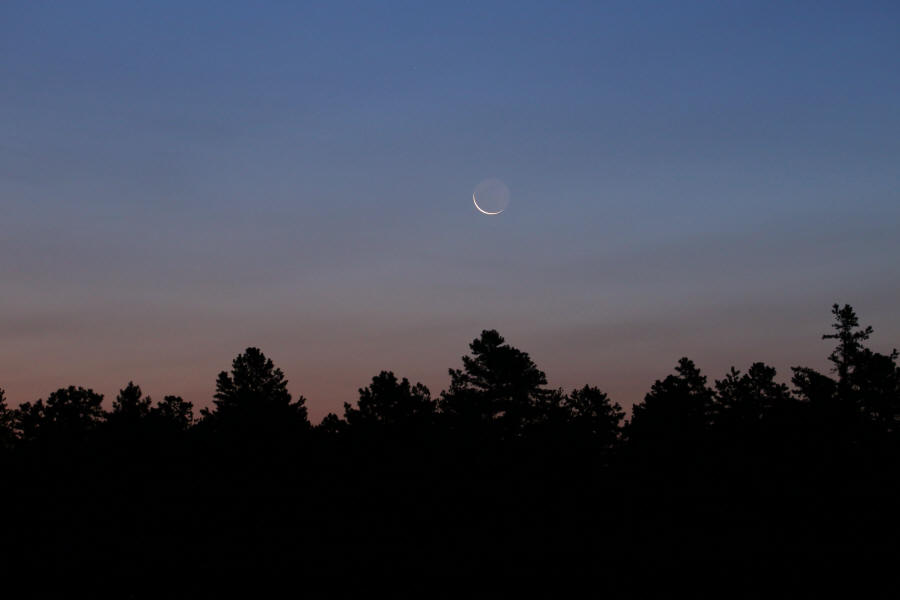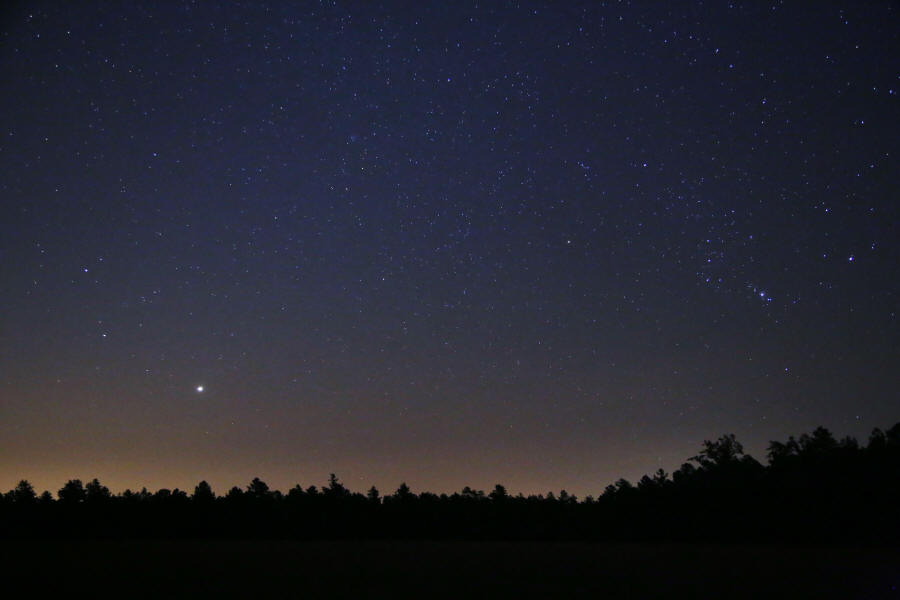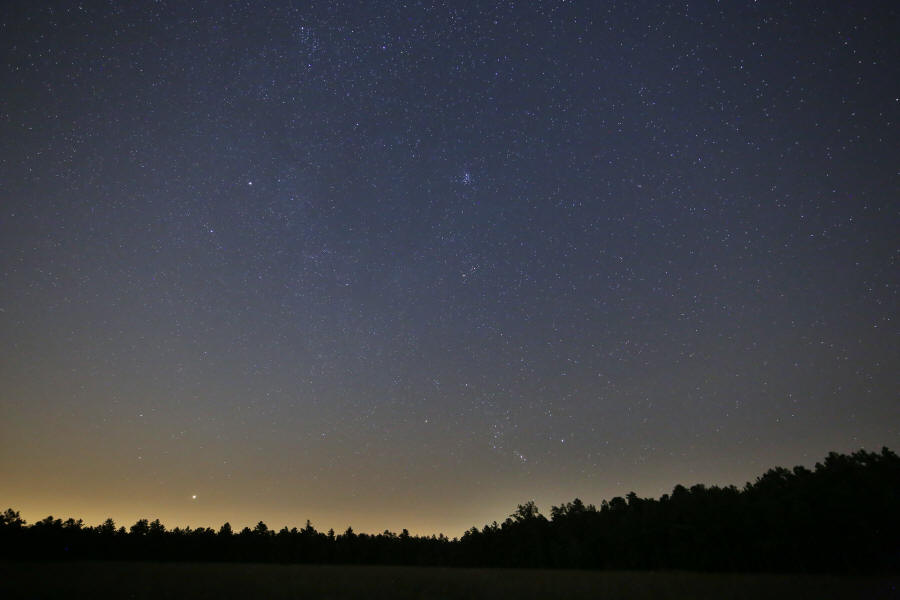The Crescent Moon Nears the Eclipse
August 20, 2017
On August 20, 2017, the crescent Moon rose at 4:40 am EDT, 14 minutes after the start of astronomical twilight and 85 minutes before sunrise. This picture of it was captured at 5:16 am when it was 2.3% illuminated and 4° altitude as viewed from Carranza Field in Wharton State Forest, NJ. That morning's crescent Moon had a solar elongation of 17.5° and it was the last time it would be readily visible before the solar eclipse on August 21. It was 33 hr 14 min before new when the picture was taken with a Canon 6D digital SLR camera and a Tamron SP 150 to 600 mm f/5-6.3 zoom lens (on a fixed tripod) set to 600 mm focal length (not cropped). It was exposed 1 second at f/8, ISO 12,800 and 3600K white balance. The moon was last seen with unaided eyes, after first locating it with 10x50 binoculars, at 6:05 am from the side of a field next to Seneca High School on Carranza Rd. At 6:10 am, the thin crescent was still fairly easy in the 10x50s, but it could no longer be seen with unaided eyes. The moon was 32 hr 20 min before new when last viewed at 6:10 am.
Here's another view of the crescent Moon at 5:23 am EDT, when it was at 5° altitude. Same camera and lens as before, but set to 300 mm focal length. Exposed 1 second at f/8, ISO 4000.
Finally, another view of the crescent Moon at 5:29 am EDT, when it was at 6.2° altitude. Same camera and lens as before, but set to 150 mm focal length. Exposed 1/2 second at f/8, ISO 3200.
Venus, Gemini and Orion
August 20, 2017
Besides spotting the crescent Moon on August 20, 2017, I also wanted to see bright Venus, now with a backdrop of wintery constellations rising above the eastern horizon. Venus is below the recumbent stick figure of Gemini while the distinctive rectangle of Orion's stick figure, plus the three-star belt at its middle with the sword dropping from his belt, is near the right-hand edge of the frame. Taken with a Canon 6D digital SLR camera (on a fixed tripod) and a Canon 24-105 mm f/4L zoom lens set to 32 mm focal length, which yields a field 58° wide x 41° high. Exposed 5 seconds at f/4, ISO 6400.
This picture was taken at 4:02 am EDT in largely the same direction as the one above, using the same 6D camera on a fixed tripod, but with an Irix 15 mm Firefly f/2.4 rectilinear wide angle lens yielding a field 100° wide x 77° high. The wider field now shows the Hyades and Pleiades star clusters above Orion, and above Venus & Gemini, the constellation Auriga with the bright star Capella. Near the top edge left of center is Perseus with Mirfak (Alpha Persei) and the Alpha Persei Association (sort of a star cluster) spangled below it. Algol is also visible at full brightness, so it's not in eclipse. Exposed 20 seconds at f/4, ISO 4000. Click the picture for a larger version.
